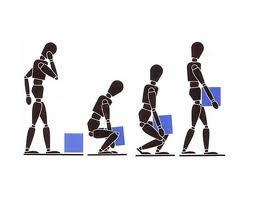The rise in the use of on-line manual handling training may not be as useful in reducing risk as employers think.
The Health and Safety Executive (HSE) in their report in 2018 suggested there was “little evidence that ‘off-the-shelf’ manual handling training, based on handling techniques, was effective”. https://www.hse.gov.uk/aboutus/reports/ara-2017-18.pdf Instead they recommend employers think more critically about the working practices and engineer changes to the working practice. They also reinforce the need for any training to be tailored to the tasks the workers carry out in their daily duties. This should include tasks, equipment and the environment in that daily practice.
 Training can be an important factor in reducing risk in manual handling but won’t maintain safety on its own. In accordance with the Manual Handling Operations Regulations 1992 hazardous handling should be avoided; where it can’t be avoided it should be assessed and measures put in place to reduce to the lowest reasonably practicable risk. These measures should be regularly monitored and reviewed, and the workers should understand them and know how to apply them.
Training can be an important factor in reducing risk in manual handling but won’t maintain safety on its own. In accordance with the Manual Handling Operations Regulations 1992 hazardous handling should be avoided; where it can’t be avoided it should be assessed and measures put in place to reduce to the lowest reasonably practicable risk. These measures should be regularly monitored and reviewed, and the workers should understand them and know how to apply them.
Training should be relevant to the type of work carried out and should cover:
- what the law says
- manual handling risk factors and how injuries can happen
- how to use mechanical aids
- how to carry out safe manual handling, including good handling techniques
- systems of work relevant to the worker’s tasks and environment
- practical work so the trainer can identify anything the trainee is not doing safely and put it right
The content of any training in good handling technique should be tailored to the tasks the workers carry out.
Workers should be encouraged to identify anything they think is not safe and bring it to the attention of someone more senior in their organisation.
If you would like information about tailored moving and handling of people training please contact Positive Positioning for a chat.



